As a marketer, you probably spend your entire day creating content for clients. From advertisements and site content, all the way to brochures and social media posts, you are their number one for content strategy and creation. But what about your own content?
We often forget about ourselves in the mix of helping others and balancing work. However, without good content, your blog won’t attract new customers or help your site ranking. It may be hard to determine how to build a blog content strategy that works for your own business and marketing. Fortunately, this article will help you build the ultimate blog content strategy and execute it flawlessly each and every month. Get your pen and paper out, be ready to learn, and start creating the best content possible for your marketing business.
1. START BY CREATING BUYER PERSONAS
The first step to any high-quality blog content strategy is creating fully-crafted and honed buyer personas. Although we’ve discussed why buyer personas are a marketing must-have in the past, a basic definition of a buyer persona is a fictional representation of your ideal customer. It is this persona (otherwise known as “avatar”) who you want to target with your marketing and content.
As a marketer, you work frequently with the idea of a demographic, even one as basic as an age and location. However, a buyer persona takes the demographic to a whole new level. The buyer persona provides you with a person, rather than a group, making it easier to hone your content, come up with ideas for ads, and grow your business to fit your actual clients.
Buyer personas are so important that HubSpot said “Having a deep understanding of your buyer persona(s) is critical to driving content creation, product development, sales follow up, and really anything that relates to customer acquisition and retention.”
To create a buyer persona, start by analyzing your company and sales. What is common among your clients? What do you think this kind of person is like in every aspect of their life?
For example, perhaps you sell snowboards and snowboarding gear. Your most popular state is Colorado, and you see a lot of males in the Denver area getting your products. With this information, you deduce that a male in this area, between the ages of 18 and 35, also likes particular snowboarders and snowboarding locations. They may also be interested in learning about adventurous or lesser known snowboarding spots in their area. Perhaps they also like to listen to music while they snowboard, and would love a high-quality snowboarding playlist.
With this information, you could choose to focus your content on music, lesser known snowboarding spots, upcoming Denver snow events, interviews with famous snowboarders, and snowboarding tips and tricks. This is why determining your buyer personas first is so important for your content strategy.
2. DETERMINE WHAT YOUR PERSONAS WANT TO KNOW
At 5th Brand Africa, we focus our content on Inbound marketing strategies. The inbound marketing method has three essential elements: attract, engage, and delight. A marketer must take all of these elements seriously.
This is where determining what your buyer personas want to know comes into play. You want to include these three elements throughout your content creation. Imagine you sell arts and crafts materials and write an article on DIY garden and patio decor. Your ideal buyer is sure to see this and click on it at some point. They must then be engaged with your content and delighted by it. This is where answering their questions, giving them more than other blogs in your industry, and being unique, all come into play.
Maybe you talk about how to turn a tire into a wishing well, or how to make your own backyard koi pond out of a kiddie pool. This may be something different from what they’ve seen, and you may even provide tips they haven’t heard before. This creates a sense that you are an authority in their areas of interest, and keeps them coming back to your site and buying your products.
To determine what your buyer personas want to know or want to see online, try to live in their shoes for a minute. Jot down every idea or interest that comes to mind when pretending to be them and build upon those. For more inspiration, you can also analyze your competitor’s content to give you ideas as to what is already trending in your industry. We’ll go into this more below.
3. ANALYZE YOUR COMPETITOR’S CONTENT
According to GoDaddy, “Business success hinges on taking something that already exists and is successful, and then adding your own spin to make it even better. That’s how to find inspiration.” Sometimes, the best place to look for content inspiration is on your competitor’s sites. Why?
Simple; they’ve already done it, and they either succeeded or failed doing it. This gives you the opportunity to learn what your demographic likes and doesn’t like without making a single step in the wrong direction.
For example, if you are a tech startup marketer, and you check out a competitor’s site, you may find that the more bland tutorials on tech topics are rarely viewed. You may also find that modern tech news and interesting tech advancements are popular blog topics. With this information, you can build a content strategy that learns from the mistakes of others and thrives in doing so.
4. DEVELOP A CONTENT STRATEGY BASED ON YOUR GOALS
With the research done, it’s time to start analyzing what you want to see from your efforts. Do you want to increase site traffic? Are you hoping to acquire new leads? Do you want people to engage with your company more on social media?
Figure out your goals and write them down on a goal chart. This will help you stay focused and keep your eyes on the prize. It will also help you determine how your content strategy will achieve these goals. For example, if your content strategy is top-notch, you are sure to see more traffic on the site. What do you want them to do when they get there? What will be your call-to-action? These are the questions you must ask yourself. Once you have the answers, it is time to create your content calendar.
5. CREATE A MONTHLY CONTENT CALENDAR
With goals in place and a basic idea of what content you want to create, it is time to create a monthly content calendar. The content calendar helps you track your content creation and lets you know what and when to post on your social media accounts. Social media integration with your site content is key to having a uniform content strategy.
This will also allow you to keep track of important dates, such as sales, holidays, events, and business updates, which you may want to cover in your content as well. To create an ideal social media content calendar, you may want to start with a template, or consult other content creators. Here is a great content calendar guide by Hootsuite to get you on the right path.
6. CONTINUE TO PROVIDE SOLUTIONS FOR YOUR PERSONAS
Although it may sometimes get exciting to create content, and you may want to try to over-create or bombard your site with new information, you must never forget your goals or your personas. There is a reason that this is called a strategy.
You must continue to think of your content as a method to acquire new clients and generate new leads. As such, you must always focus your content on providing solutions for your personas and building upon your personas as well. By analyzing your success over time, you are sure to do just that.
7. ANALYZE THE SUCCESS OF YOUR CONTENT OVER TIME
A farmer doesn’t plant their crops to never see them sprout, and a marketer doesn’t create content to see the same site analytics they saw before. Your efforts must be validated and, if they are not, you must rethink your content strategy.
To do this, you may want to start with Google Analytics, then move to an actual site audit that will tell you more about your site ranking and SEO. After your analysis, it will be clear what is attracting more people and what is not. You can then tailor your strategy according to this newfound information.
8. NEVER STOP TAILORING YOUR STRATEGY ACCORDINGLY
The most important step is to never think you are finished. As with anything in marketing and business, things change. Personas change and grow, trends differ, and your content may quickly become less interesting or outdated to your ideal demographic. This is where tailoring is important.
Pay attention to your competitor’s blogs, even after the initial snooping. Follow people that are similar to your buyer persona to know what they are interested in at any given point. Never stop asking how you can solve problems or give answers to your ideal viewers and buyers.
Using this process, you will have a successful and thriving content strategy that is sure to succeed. The key is to pay attention to your audience, never fail to set yourself apart from the pack, and keep track of your successes and failures. After all, content, like any type of marketing, is constantly changing—will you change with it?
Need a content marketing expert to walk you through building your blog strategy? Contact us for a free consultation on how to get the most out of your digital marketing!



